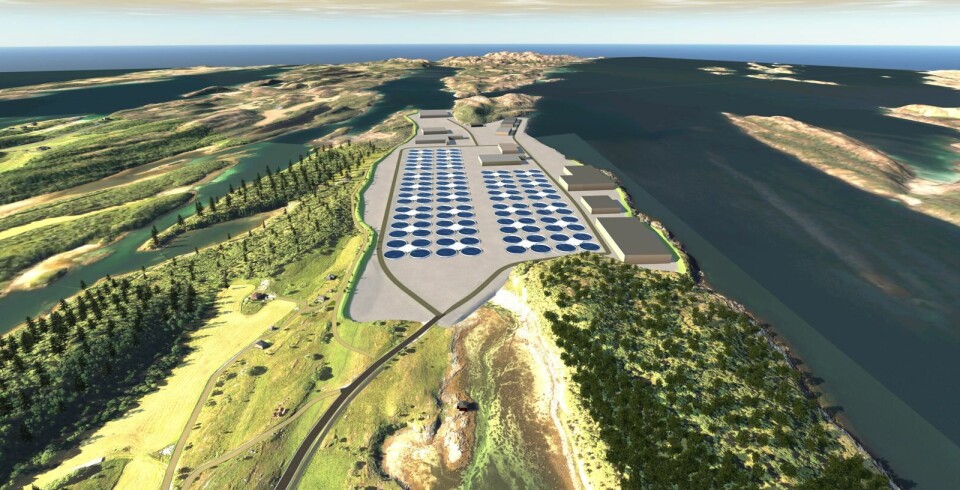
430,000 tonnes of on-land salmonid production in Norway's planning pipeline
Just before Christmas, Norway slapped a ban on new licence applications for land-based salmon and trout farms for at least six months. But existing applications can still be processed, and an overview of those plans compiled by Fish Farming Expert’s Norwegian sister site LandbasedAQ shows that projects already in the queue for permission could increase the country's current production by almost a third.
On 20 December, another “bombshell” came from the Norwegian government. The Ministry of Trade and Fisheries (NFD) announced that it was temporarily suspending the ability to apply for land-based aquaculture permits. The suspension will apply until new regulations for aquaculture on land are in place, but for a minimum of six months.
The reason for the moratorium is that there are a number of applications for, and permits have been granted for, concepts with a close connection to the sea. According to the ministry, this challenges the regulations’ clear distinction between aquaculture in the sea and aquaculture on land, and in their opinion shows a technological development that was not foreseen when the current regulations for aquaculture on land were introduced.
Before the tremors after the shock had completely subsided, there was some uncertainty as to what the moratorium applied to, but Kristina Sigurdsdottir Hansen, State Secretary of the NFD, stressed to LandbasedAQ that the temporary suspension applies to salmon, trout and rainbow trout broodstock, fry and food fish - but not, for example, facilities for cod and cleaner fish.
Flow-through facilities
LandbasedAQ has also subsequently received confirmation that the suspension applies to applications for new permits on land. Extension or change of granted permits on land is not covered by the suspension.
At the same time, Hansen stated that county councils, which are the administrations that process the applications, now have 21 applications for permits for aquaculture of food fish and hatchery fish on land for processing.
“More than half of these are so-called flow-through facilities or a combination of RAS and flow-through, and several apply for both the production of hatchery fish and food fish. Most applications are being processed by Vestland County Municipality. Overall, a total annual production of around 591,000 tonnes of fish is sought,” she said.
We arrive at a total of approximately 430,000 tonnes of MTB for land-based food fish production, for which there are applications awaiting processing
LandbasedAQ
We have asked the various county councils what permits they have for processing.
22 food fish applications
The figures we have been told deviate somewhat from the sum figure stated by the ministry. We have been informed of 22 new applications for permits for food fish farms and a conversion by Fredrikstad Seafoods to switch from farming salmon to yellowtail kingfish. There are also 22 applications for hatcheries. But here a large majority are in the “not new” category, but apply to extensions and changes to existing facilities. And in this category, new applications can therefore continue to come in regardless of the moratorium.
In total, we have been notified of applications for 384,150 tonnes of MTB (maximum allowed biomass) for land-based food fish.
Annual production
There are also applications for 89,347 tonnes of annual production, which is another way of applying for permission for land-based production. If we say that annual production will be approximately twice that of MTB (it can vary greatly depending on how the production is set up) then we arrive at a total of approximately 430,000 tonnes of MTB for land-based food fish production for which there are applications awaiting processing.
This does not include projects that already have permission, such as Salmon Evolution's hybrid recirculation / flow-through facility which will produce more than 30,000 gutted weight tonnes of salmon annually when fully developed.
For hatchery fish, we have figures of approximately 38,000 tonnes MTB, but here it must be specified that we have not been informed of MTB on hatchery fish from Vestland County Municipality, which has the most such applications for processing.
See the full list of current applications for on-land fish farms in Norway here.























































